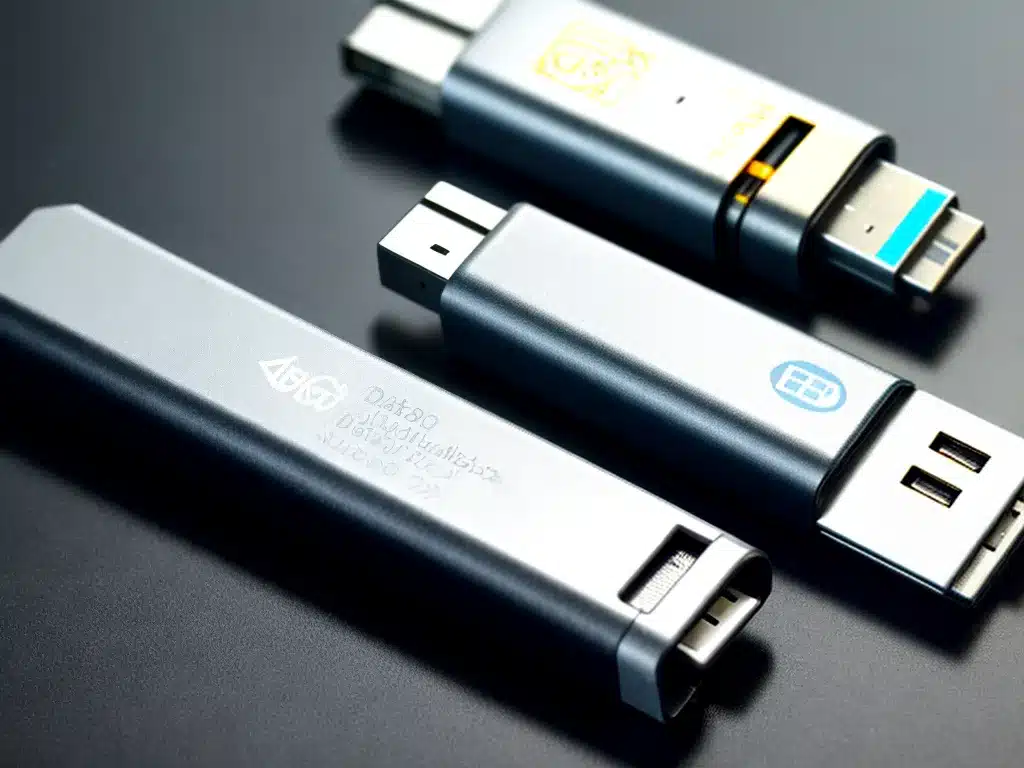
USB flash drives, also known as thumb drives or memory sticks, have been around for over 20 years now. In 2024, are they still a viable option for backing up your important data? Let’s dive in and find out.
The Benefits of USB Flash Drives for Backup
There are some key benefits that make USB flash drives an attractive option for data backup:
Portability
One of the biggest advantages of USB drives is their portability. They are tiny, lightweight, and can easily fit in your pocket or bag. This makes them super convenient to take your data anywhere with you. If you need to access your files on multiple devices, USB drives allow you to do that seamlessly.
Easy Plug-and-Play Functionality
USB flash drives are plug-and-play, meaning you can simply plug them into a computer’s USB port and start using them right away. There is no need for additional software or drivers. This makes USB drives quick and easy to use. Just copy your files over, eject the drive, and you’re good to go.
Durability and Reliability
Today’s USB drives are built with durable components that can withstand frequent handling. Their flash memory is resilient against magnets and drops. In fact, most quality USB drives today claim to last up to 10 years. While you should replace them sooner for optimal performance, USB drives remain one of the more reliable backup options out there.
Security
USB drives allow you to control access to your data. You can password-protect your drive or use encryption software to keep your data secure. This gives you peace of mind if your drive gets lost or stolen.
Cost-Effectiveness
USB drives are affordable and offer large storage capacities. A 64GB USB drive today costs around $10-15. That’s an extremely low price per GB compared to many other data storage solutions.
The Downsides of USB Drives for Backup
However, USB drives do come with some downsides to consider:
Slow Speeds
Most USB 2.0 drives today have maximum read/write speeds of around 30-40MB/s. While USB 3.0 drives can go up to 100MB/s, that’s still much slower than internal SSDs which boast over 500MB/s speeds. The sluggish transfer rates make USB drives impractical for large backups.
Not Ideal for Automatic Backups
Software like Time Machine on Mac enable fully automated backups in the background. USB drives require manual plugging in and copying over of files. For regular backup routines, services like cloud storage may be more convenient.
Easy to Lose or Damage
Their small size makes USB drives prone to getting misplaced or lost. Their exposure also makes them likely to get physically damaged, corrupted, or infected with malware. Not ideal if your only backup copy is on a USB drive.
Limited Capacity
While 64GB or 128GB sounds sufficient, storage needs can quickly outgrow USB drive capacities. Alternatives like external SSDs and cloud storage offer much more storage scalability.
Harder to Share Large Files
Cloud storage services make sharing large files seamless. USB drive file transfer involves physically handing over the drive. As file sizes continue to grow, USB drives make less sense for transferring files.
Verdict: USB Drives are Still Handy But Not Ideal as Primary Backup
So what’s the verdict on using USB drives for data backup in 2024?
USB drives are best used as supplemental, secondary backups rather than your sole backup medium. Their portability and ease of use make them handy for occasional backups and transfers. But for regular, automated backup routines, cloud storage or local external drives tend to be better options.
USB drives are too prone to physical loss, corruption, and slow speeds for primary data backup. But they offer an excellent budget-friendly secondary backup to complement services like Apple Time Machine or cloud storage. A few strategic backups to a USB drive can provide invaluable peace of mind.
I recommend using USB drives:
- As additional backups for important individual files and folders
- To transfer limited amounts of data between devices
- As temporary backup when traveling or in transit
But depending solely on USB drives for all your important data backup needs in 2024 and beyond? I would give that a big nay. The risks and limitations outweigh the benefits for primary backups.
So in summary – USB drives, yay for secondary and supplemental backups. But nay as your sole backup approach. A prudent backup strategy should include both local and cloud backups, with USB drives as an extra safety net. That would be my recommended approach for protecting precious personal data in 2024 and beyond!












